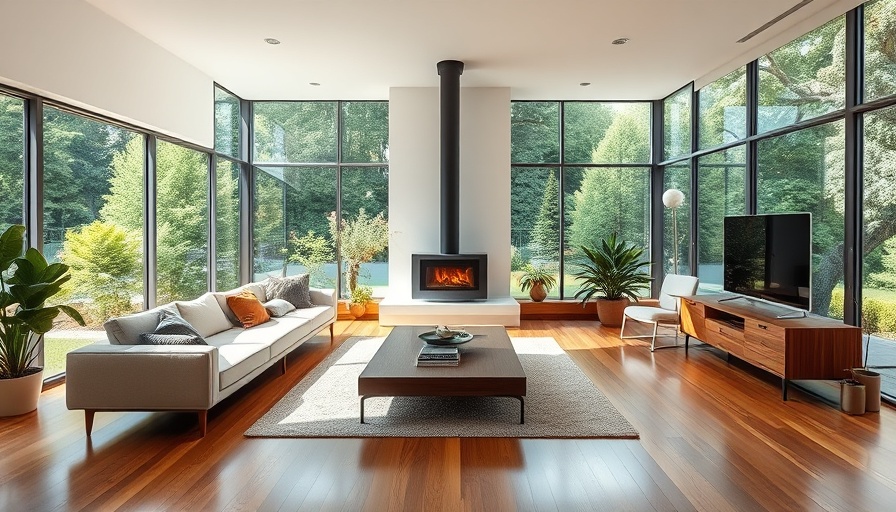
Reimagining Home Spaces: The Appeal of Midcentury Modern Design
As priority shifts toward functional and aesthetically pleasing home designs, the charm of midcentury modern architecture has never fallen out of fashion. Emphasizing simplicity, clean lines, and a strong connection to nature, this design movement, flourishing primarily from the 1940s to the 1960s, resonates particularly with homeowners looking to blend indoor and outdoor spaces seamlessly.
Embracing Natural Elements
What sets midcentury modern homes apart is their unique relationship with the environment. Large glass windows, open floor plans, and outdoor living spaces invite natural light and the beauty of the outdoors into the home. This approach not only enhances the aesthetics but also promotes mental well-being, making it a popular choice among modern homeowners seeking serenity in their spaces.
The Role of Eco-Friendly Materials in Contemporary Living
Today's homeowners are increasingly interested in sustainable living solutions. The midcentury modern style naturally aligns with eco-friendly practices by favoring materials like wood and stone found in nature. Utilizing these sustainable materials constitutes a broader trend towards eco-conscious home improvement that respects both style and environmental responsibility.
Unique Benefits of Midcentury Modern Homes
One of the foremost advantages of opting for a midcentury modern home is the emotional connection it fosters. The open layout invites conversation and community, making it a warm setting for family gatherings or friendly get-togethers. Additionally, the homes often require less maintenance than more ornate styles and focus on durability, cost-effectiveness, and timeless design.
Distinctive Architectural Features to Consider
When contemplating a midcentury modern design for a new build or renovation, homeowners should pay attention to certain hallmark architectural features. Flat planes, large glass windows, and natural materials create that quintessential look. To augment the home's charm, consider integrating built-in furniture, which was a key component of this style that maximizes space and enhances functionality.
Future Trends: Blending Indoor and Outdoor Living
As we navigate the complexities of modern living, expect an increased demand for designs that effectively fuse interior comfort with the wellness potential of outdoor living. Urban gardening, patios, and expansive balconies are integral in creating that balance between nature and home, fulfilling the desires of many seeking refuge from fast-paced lifestyles. The clever usage of biophilic design principles, which promote direct and indirect connections to nature, stands to enhance future constructions.
Final Thoughts and Actionable Insights
This midcentury modern approach is more than just a nostalgic nod to the past; it’s a roadmap to rejuvenating our living spaces in a way that values both aesthetics and mental wellness. Imagine stepping into a space where the lines between inside and outside blur. Whether you're looking to fully embrace this architectural phenomenon or simply wish to incorporate some of its elements, understanding its core principles can guide your next home renovation. Explore various online resources or consult local contractors to determine your unique possibilities in merging midcentury charm with contemporary functionality.
 Add Row
Add Row  Add
Add 




Write A Comment